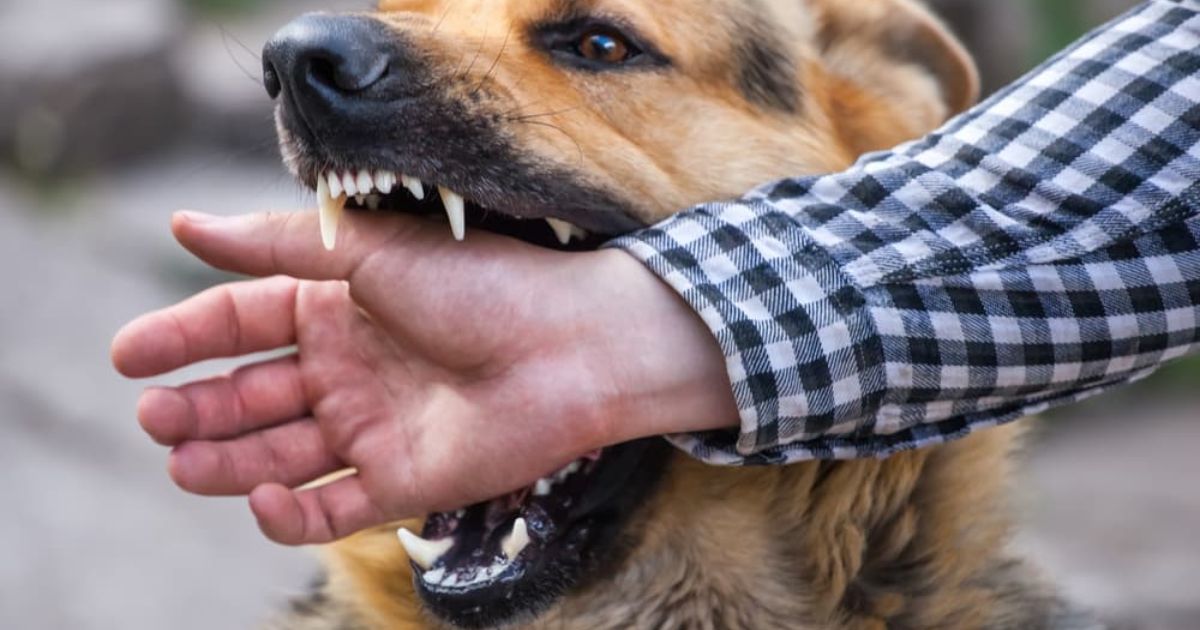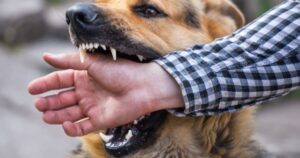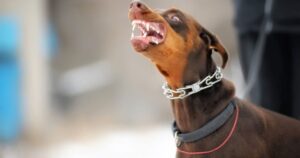Ever wonder which dog could potentially do the most damage if it clamped down? You might be surprised by the breed with the most powerful bite force. Brace yourself as we reveal the canine chomp champion.
Dogs’ bites are measured by the pressure when they clamp down – pound per square inch (PSI). The higher the PSI number, the greater the force they can exert with their jaws. To put it in perspective, the average human bite is around 120-140 PSI. A full-grown lion’s bite force is 600+ PSI. Yet certain dog breeds can out-bite a lion!
Dog Breeds With the Strongest Bite
While any dog can bite if provoked, larger breeds tend to have stronger bite forces due to their size and musculature. Here’s a ranked look at some of the top canine chomppers:
The 743 PSI Beast: The Kangal Shepherd from Turkey
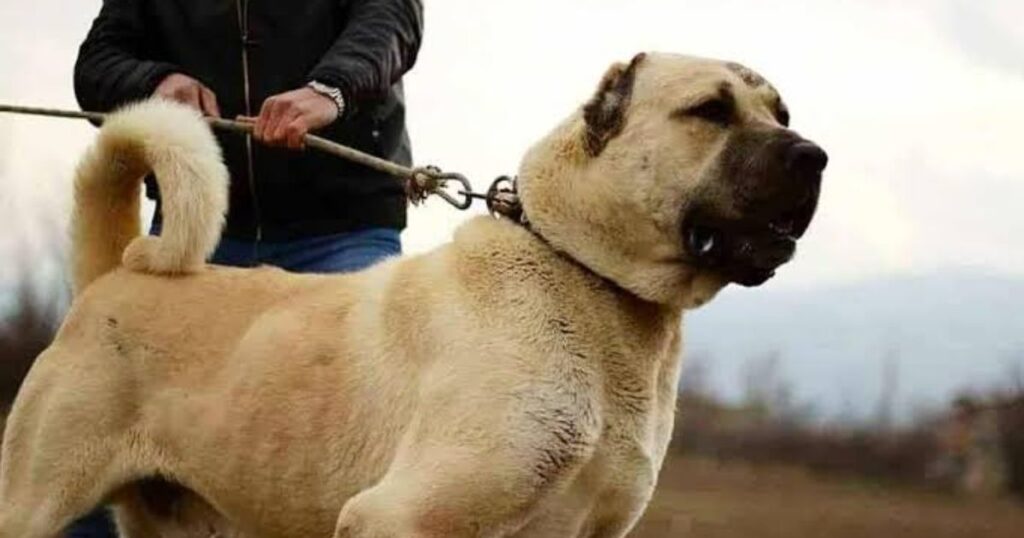
At a bone-crushing 743 PSI of bite force, the Kangal is the undisputed king. This ancient Turkish breed was developed to be a fierce guardian against predators like wolves and bears. Weighing 100-150 lbs, they are roughly the size of a Great Dane but with far more powerful jaws.
Massive Mastiff Maulers: Cane Corsos and English Mastiffs
The Cane Corso, a descendant of Roman war dogs, has an incredible 700 PSI bite rating. As for the aptly named English Mastiff, these working giants pack a 556 PSI punch despite their typically mild demeanor. Both breeds were developed as guards and specialist hunters.
| Breed | Bite Force PSI | Size |
| Kangal Shepherd | 743 PSI | 100-150 lbs |
| Cane Corso | 700 PSI | 90-120 lbs |
| English Mastiff | 556 PSI | 160-230 lbs |
Wild Wolfdogs and Their Ancestors’ 406 PSI Bite
While not technically a breed, wolfdogs (wolf-dog hybrids) have a powerful 406 PSI bite from their wild wolf genes. Their high prey drive and the wariness of humans make them a formidable, if controversial, pet.
Rottweilers: 328 PSI of Protective Power
Known for their guarding abilities, muscular Rottweilers can chomp down with 328 PSI of force. Despite their intimidating appearance, properly raised Rotties make loyal companions. However, their strength demands responsible ownership.
The “Happy-Go-Unlucky” Siberian Husky: 320 PSI
Don’t let their friendly, smiley demeanor fool you – Siberian Huskies descended from tough sled dogs have a deceptively strong 320 PSI bite. Their power combined with their predatory instincts means any “bite leader” interactions should be monitored.
American Bulldogs Don’t “Bull” Around with 305 PSI
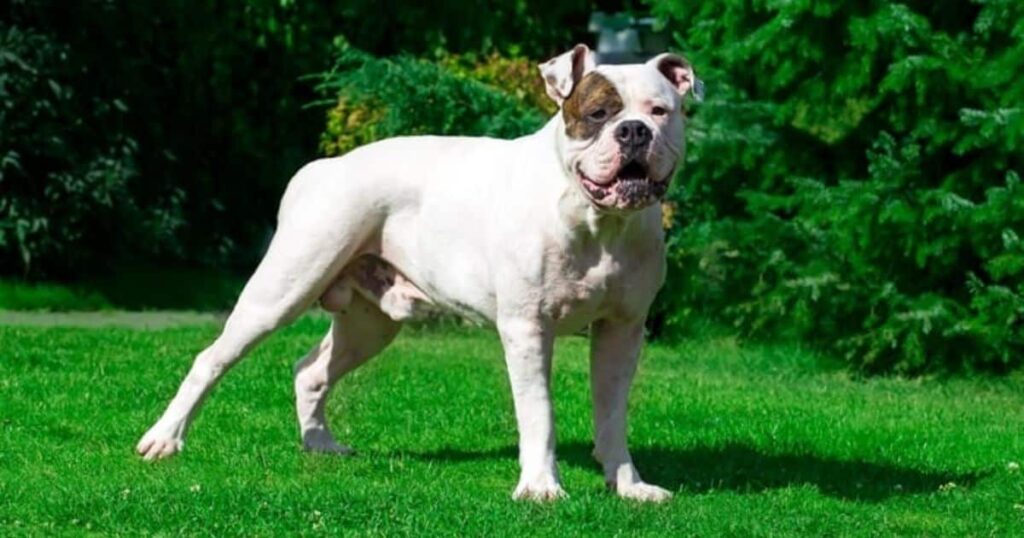
Stocky American Bulldogs were bred for functional strength and guarding. With their wide jaws and 305 PSI bite, they pack a lot of force into a smaller frame compared to giants like Mastiffs.
Pitbull “Proof”: Breaking Down the 241 PSI Bite Myths
Pitbulls are infamous for their “locking” jaw myth and perceived aggression. In reality, their 241 PSI bite is relatively average for their size. Lack of training and irresponsible ownership creates danger, not the breed itself.
“It’s not the breed, it’s the deed. Any dog can bite if mishandled, scared, or threatened.” – Expert Dog Trainer Jenna Bowman
German Shepherds’ 238 PSI: Police, Protection, Furry Friend
Intelligent, athletic German Shepherds were bred for all-purpose utility. Their 238 PSI bite makes them effective police K9s and personal guardians when trained. But with the right owners, they’re also loyal family companions.
While powerful bites are important for certain working roles, dog aggression ultimately comes down to genetics, socialization, training, environment, and responsible ownership – not just their breed’s bite stats.
Dog Attack Prevention Tips
A dog’s body language and cues give vital warning signs of potential aggression. Being able to read a “rawkāy rūff” can help prevent accidental bites:
- Growling or snarling
- Showing teeth
- Raised hackles (fur on back sticking up)
- Stiff body posture or slowly wagging tail
- Pulling ears back against the head
Child Safety: Crucial Tips for Kids Around Dogs
Children are especially vulnerable to dog bites due to their size and inability to interpret animal body language. Follow this crucial advice:
- Never leave babies/toddlers unsupervised with any dog, even if it’s branded as “kid-friendly”
- Teach kids not to tease, pull on, or directly approach an unknown dog
- Don’t let children play “bite leader” games that rile up the dog
- Make sure kids aren’t chasing or running past dogs, which can trigger prey drive
- Consider a professional child/dog introduction if adopting a new pup
Properly Greeting an Unfamiliar Pup
When meeting a new dog, move calmly and avoid direct eye contact or looming over them, which can seem threatening. Let the dog sniff you first before petting you. Go slowly if kids are involved, and don’t force interactions.
Hairy Situations: Encountering a Dogfight Safely
If two dogs start fighting, never get between them! Trying to physically break it up puts you at high risk of being accidentally attacked by the enraged animals. Instead:
- Make a loud noise (air horn, whistle, bang pots) to startle and distract the dogs
- Spray them with a hose or citronella spray to break their focus if possible
- Throw jackets or chairs to separate them without putting your body in the middle
The key is avoiding becoming accidentally targeted by the dogs’ aggression and redirected bites. Back away and call animal control if you can’t safely break it up.
Read More Blog: How Long Do French Bulldogs Live?
What To Do Following A Dog Bite Incident
Getting bitten by any dog can be a traumatic, bloody experience. By staying calm and following these steps, you’ll maximize safety and build your legal case:
- Get to Safety. First, create distance between you and the aggressive animal. Go inside a building, vehicle, or secure enclosure out of the dog’s reach.
- Call for Help. Contact emergency services right away – you may need police, animal control officers, and medical personnel on the scene. Give your location, description of the dog, and severity of injuries.
- Tend to Wounds. Apply firm pressure with clean cloths or towels until medical assistance arrives. This helps stop bleeding.
- Gather Evidence. To the best you safely can, collect:
- Photos/video of your injuries, the dog, the scene, and any other relevant details
- Witness contact information and statements
- Dog’s owner info, address where the incident occurred
- Details about what may have provoked the attack (if known)
- Contact a Dog Bite Attorney. Laws governing dog bite liability vary by city and state. An experienced dog bite lawyer knows how to protect your rights and build a case.
“Having worked on many dog bite cases, documentation is key – the more evidence preserved immediately after an attack, the stronger the liability claim will be.” – Dog Bite Attorney Emily Richards
Common Dog Bite Injuries
The force of a dog’s bite, combined with the thrashing and tearing motion, can cause severe soft tissue damage. Common injuries from dog attacks include:
- Lacerations and punctures: Dogs’ sharp teeth can rip through flesh leaving jagged wounds, especially on the arms, legs, hands, and face where victims try to shield themselves.
- Crushed or broken bones: Extremely powerful bites can crush bones in the hands, arms or jaw if they clamp down.
- Nerve damage: The intense pressure of a bite can cause temporary or permanent nerve injury.
- Disfiguring scars and disfigurement: Dog bites often leave significant scarring, especially on the face if attacked in that area. These visible scars can impact self-esteem.
- Infection: A dog’s mouths harbor many bacteria that when transmitted through bites can cause serious infections like:
- Rabies
- Pasteurella
- MRSA
- Tetanus
- Psychological trauma: The violence of an attack and feelings of vulnerability afterward can manifest in PTSD, anxiety, depression, and other mental health issues.
Even seemingly “minor” puncture wounds require medical attention to properly clean out the bacteria and avoid complications from infection setting in.
Medical Treatment For Dog Bites
Initial Evaluation and Treatment
When a victim arrives at the emergency room after a bite incident, the priorities are:
- Wound cleaning: Areas around the lacerations or punctures are shaved and thoroughly scrubbed with an antibacterial solution to remove hair, dirt, bacteria, and other debris.
- Stopped bleeding: By applying firm pressure, bleeding is controlled and damage is evaluated.
- Imaging tests: X-rays, CT scans, or MRIs may be ordered to check for fractures, internal damage, or foreign objects like tooth fragments.
- Stitches or surgery: Deep lacerations and open wounds will be closed up with stitches or staples. In severe cases, reconstructive surgery may be required.
- Antibiotics & other medications: To prevent infection, antibiotics will be prescribed. Other medicines for pain, anti-inflammatory drugs, or rabies shots may also be administered.
Once stabilized, patients receive detailed homecare instructions and a timeline for follow-up appointments.
Follow-Up Care
Even once the initial wounds have been treated, dog bite injuries are far from healed. They require extensive follow-up wound care to promote recovery and check for complications like infection setting in. This can involve:
- Cleaning and re-bandaging: During repeat visits, nurses re-clean wounds, change dressings and bandages, and inspect for signs of issues.
- Managing stitches or drains: Stitches need to be kept clean until time for removal. Some bite wounds require temporary surgical drains to eliminate fluid buildup.
- Continued antibiotics: Oral antibiotics are usually prescribed for 1-2 weeks to fully clear any bacterial infection risk.
- Physical therapy: For cases involving muscle, tendon, or nerve damage, exercises, and PT may be needed to restore strength and mobility as healing progresses.
- Scar treatment: Once lesions have fully closed, treatments like injections, surgery, laser therapy or silicone gels can improve the appearance of scarring.
Permanency
In some traumatic dog mauling cases, the injuries result in permanent disfigurement or disability for the victim, such as:
- Amputation of limbs: If an arm, hand, finger, toe, or other extremity is mutilated, it may require surgical amputation
- Nerve and muscle damage: Severed nerves and torn muscles in the neck face, or extremities can leave those areas permanently weak or paralyzed
- Severe scarring: Particularly on highly visible areas like the face and neck, some scars from bites may significantly impact appearance even after treatment
- Emotional trauma: The psychological impacts like PTSD, anxiety, and depression can be lifelong challenges to overcome
Permanency cases require long-term plans for additional corrective procedures, specialty equipment, therapy, and other ways to manage the lasting effects as much as possible. Extensive documentation of these permanent injuries is critical for legal claims.
Liability in Dog Bite Cases
When pursuing legal action after a dog attack, figuring out who is liable (responsible) for damages gets complicated. Dog bite liability laws vary across different states and jurisdictions based on specific circumstances.
Generally though, dog owners can be held liable and financially responsible if:
- They knew or had reason to know their dog was dangerous: Maybe their dog already bit someone before or acted aggressively. Certain breeds may be considered inherently higher-risk as well.
- They failed to properly leash, confine or control their dog: If a dog got loose and attacked because it wasn’t properly restrained or allowed to roam.
- The bite occurred when the victim was lawfully on their property: Such as mail carriers, utility workers, etc. Even without a known danger, owners have a duty to control pets.
In some cases, landlords of apartment complexes with lax pet policies, dog daycare centers, veterinary clinics, and other entities could share liability as well if negligence is proven.
“What sets apart successful dog bite lawsuits is extensive evidence – documenting the incident, vigilantly pursuing medical care to show damages, and hiring legal experts to establish liability based on local statutes.” – Dog Bite Lawyer Kyle Norton
An experienced dog bite attorney knows how to navigate these tricky liability laws unique to your location. They investigate to determine all potential defendants, prove negligence, and fight for the compensation you deserve.
In the end, while certain breeds may have more powerful bites, responsible pet ownership along with education on dog body language and bite prevention is the best way to avoid tragic incidents. When attacks do occur though, victims must act quickly to protect themselves both medically and legally.

